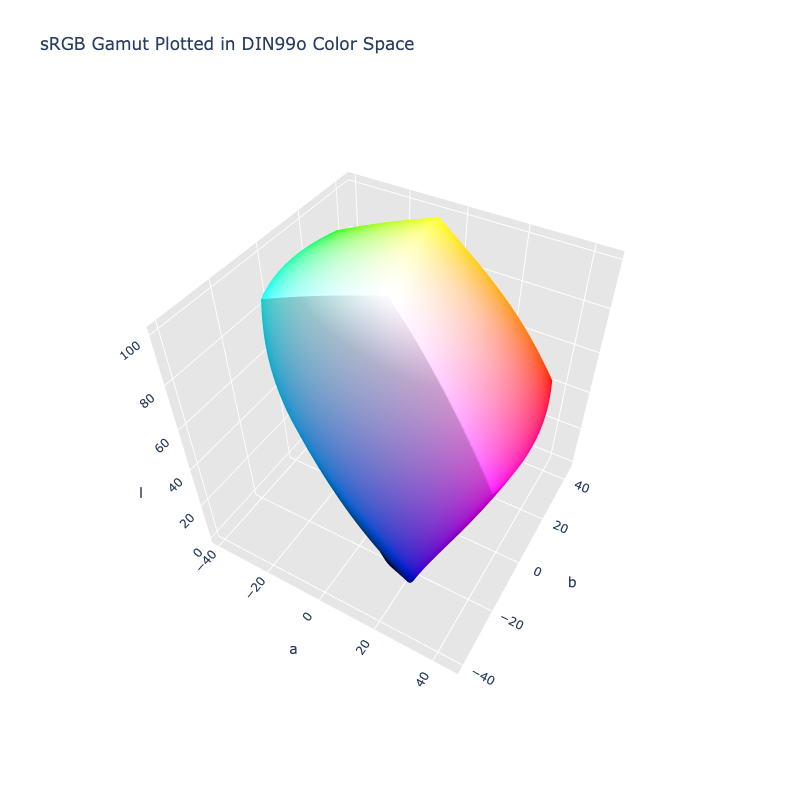DIN99o
The DIN99o color space is not registered in Color by default
Properties
Name: din99o
White Point: D65 / 2˚
Coordinates:
| Name | Range* |
|---|---|
l | [0, 100] |
a | [-55, 55] |
b | [-55, 55] |
* Space is not bound to the range and is only used as a reference to define percentage inputs/outputs in relation to the Display P3 color space.

The sRGB gamut represented within the DIN99o color space.
The DIN99 color space system is a further development of the CIELab color space system developed by the FNF / FNL 2 Colorimetry Working Committee. It takes the CIELab space (with a D65 illuminant) and compresses it such that the space yields better equidistant using Euclidean distance. The whole color space is essentially modified to better fit the color distancing algorithm opposed to CIELab which has adapted the color distancing algorithm to better fit the color space, the latest iteration being ∆E*00.
Channel Aliases
| Channels | Aliases |
|---|---|
l | lightness |
a | |
b |
Input/Output
As DIN99o is not currently supported in the CSS spec, the parsed input and string output formats use the color() function format using the custom name --din99o:
color(--din99o l u v / a) // Color function
When manually creating a color via raw data or specifying a color space as a parameter in a function, the color space name is always used:
Color("din99o", [0, 0, 0], 1)
The string representation of the color object and the default string output use the color(--din99o l u v / a) form.
>>> Color("din99o", [57.289, 39.498, 30.518])
color(--din99o 57.289 39.498 30.518 / 1)
>>> Color("din99o", [77.855, 16.444, 40.318]).to_string()
'color(--din99o 77.855 16.444 40.318)'
Registering
from coloraide import Color as Base
from coloraide.spaces.din99o import DIN99o
class Color(Base): ...
Color.register(DIN99o())